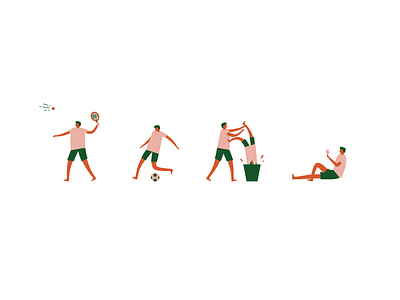Members of those groups have insight into their condition and understand the potential hurt they might do, and so seek to keep away from acting on their impulses. Of all of the members of this white-winged genus that inhabit Britain, this is at the identical time the most stunning and the rarest. May and August are the months wherein to look after this gem of the Pontia genus. The chrysalis very a lot resembles that of the Small Garden White, and is completely not like that of the following, the Orange-Tip, with which it has been by some entomologist united into one other genus (Manicipium). The female Cardamines has the wings white above, with a greyish black tip, and a small oval, or crescent-shaped black spot (much smaller than that of Daplidice) close to the centre of the front wings; beneath, a white floor, with green marblings, that are far more sharply outlined than those in Daplidice. The male is distinguished by the absence of the black spot nearest to the lower margin of the entrance wing, and of the black marginal spots and gray clouding of the hind wings. Its color is inexperienced, with yellow spots round each spiracle, which is itself tinged with purple.
 On this species the color of each sexes on the higher aspect is a warm, dark brown, having on all of the wings a border of darkish orange spots. The male is distinguished from the feminine by having just one round black spot, or sometimes none, on every higher wing, whilst the feminine is spotted as within the engraving. The wing markings on both the higher and below sides are, although simple, extraordinarily elegant and chaste. The intensity of the dark markings, on each the higher and under sides, can be topic to much variation. The most unusual form of the insect is there represented, but there are specimens sometimes met with that have the blackish spot on the tip of the wings very much fainter; and typically, as in one which I possess, this spot is totally wanting. The shape of the wings in these is also completely different, being a lot rounder, and proportionately shorter, than within the peculiar form. The slender, fragile wings and the attenuated body of the Wood-white give it a glance of almost ghostly lightness, and its manners befit its spectral side, for it appears to haunt the nonetheless and lonely wooden glades, flitting about slowly and restlessly, and being seldom seen to settle.
On this species the color of each sexes on the higher aspect is a warm, dark brown, having on all of the wings a border of darkish orange spots. The male is distinguished from the feminine by having just one round black spot, or sometimes none, on every higher wing, whilst the feminine is spotted as within the engraving. The wing markings on both the higher and below sides are, although simple, extraordinarily elegant and chaste. The intensity of the dark markings, on each the higher and under sides, can be topic to much variation. The most unusual form of the insect is there represented, but there are specimens sometimes met with that have the blackish spot on the tip of the wings very much fainter; and typically, as in one which I possess, this spot is totally wanting. The shape of the wings in these is also completely different, being a lot rounder, and proportionately shorter, than within the peculiar form. The slender, fragile wings and the attenuated body of the Wood-white give it a glance of almost ghostly lightness, and its manners befit its spectral side, for it appears to haunt the nonetheless and lonely wooden glades, flitting about slowly and restlessly, and being seldom seen to settle.
We converse of the inexperienced marblings of this species-and, to the naked eye, they do seem like of fairly a bright inexperienced-however under a microscope or highly effective lens that colour disappears, being resolved into a mixture of shiny yellow and pure black scales, which, with the dazzling snow-white ground scales that encompass them, kind a microscopic tableau of extraordinary magnificence. The colouring may be described as consisting of almost equal quantities of black and creamy-white, or pale yellow, so arranged as to type a marbled pattern of great richness. This distinction in outline is, I consider, a sexual distinction, the extra rounded kind belonging to the feminine insect. From its weak flight, it is a very simple insect to seize. Though this little insect bears the identify of Fritillary, at the top of its lengthy and vital title, it really belongs to a household widely differing from that of any of the true Fritillaries previously described, and it solely shared their identify on account of its similarity in colour and markings. But the chief decoration is reserved for the below floor, which is chequered, in a way not easily described, with a mushy but wealthy inexperienced tint upon white, relieved here and there by a few black touches.
The male Orange-Tip wants no description, for the aim of recognition, beyond that conveyed by his title; but because the feminine is less known, and has been on a number of occasions mistaken for the rare Bath White (Daplidice), will probably be effectively to level out her chief distinguishing characters. We’re informed by Lewin, that it was named the Bath White from a bit of needlework executed at Bath, by a younger lady, from a specimen of this insect, mentioned to have been taken near that metropolis. The seize of a Bath White is an entomological “occasion,” and the day thereof is a crimson-letter day in the lucky captor’s life. A contemporary account states that these have been the small white butterflies (Pieris Rapæ). I have a specimen that expands two inches and two strains across, from tip to tip, and have seen another not larger than a small Copper butterfly-little a couple of inch from tip to tip.